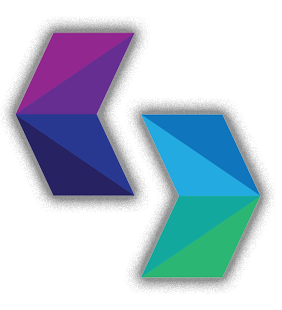Unlocking New Horizons: Exploring the Power of Flutter Desktop Support
Flutter, Google’s versatile UI toolkit, has been a game-changer in mobile app development, enabling developers to create stunning and performant applications across various platforms. But did you know that Flutter isn’t just limited to mobile? In this article, we’re embarking on a journey to explore the uncharted territories of Flutter Desktop Support, where the magic of Flutter extends to desktop applications. Join us as we delve into the ins and outs of leveraging Flutter’s prowess for desktop development.
Introduction to Flutter Desktop Support
Flutter Desktop Support marks a significant leap in the evolution of Flutter’s capabilities. It empowers developers to craft seamless desktop applications for Windows, macOS, and Linux using the same familiar tools and codebase that Flutter is renowned for. By harnessing Flutter’s reactive framework and rich widget library, you can create visually appealing and natively compiled desktop applications that stand out.
Benefits of Flutter Desktop Support
Venturing into Flutter Desktop Support opens up a world of advantages:
- Code Reusability: Leverage the power of code reusability, utilizing the same codebase for both mobile and desktop applications, saving time and effort.
- Hot Reload: The beloved hot reload feature remains intact, enabling real-time testing and refining of your desktop app.
- Native Performance: Flutter’s natively compiled code ensures high performance across different desktop platforms.
- Uniform UI: Maintain a consistent user interface across multiple platforms, delivering a unified experience.
Setting Up Your Development Environment
Getting started with Flutter Desktop Support is a breeze. Follow these steps:
- Install Flutter: If you haven’t already, install Flutter by following the official guide here.
- Enable Desktop Support: Once Flutter is installed, enable desktop support by running the following commands:
flutter channel dev flutter upgrade flutter config --enable-linux-desktop flutter config --enable-macos-desktop flutter config --enable-windows-desktop - Check Devices: Confirm your desktop devices are available by running
flutter devices.
Building Cross-Platform Desktop Applications with Flutter
Creating a basic Flutter desktop application mirrors the process of building a mobile app:
- Create Project: Initiate a new project using
flutter create my_desktop_app. - Design UI: Design your desktop UI using Flutter’s extensive widget library, considering the larger screen space.
- Run the App: Run your desktop app using
flutter run -d linux(replacelinuxwithmacosorwindowsas needed).
Design Considerations for Flutter Desktop Apps
Crafting a captivating UI for desktop apps requires careful consideration:
- Layout Adaptation: Design responsive layouts that adjust to various screen sizes and orientations.
- Mouse and Keyboard Interactions: Optimize for mouse clicks, hover effects, and keyboard interactions.
- Context Menus: Implement context menus for enhanced user experience.
Debugging and Testing Flutter Desktop Apps
Debugging and testing desktop apps follow familiar practices:
- Debugging: Utilize the powerful debugging tools of Flutter, such as breakpoints and logging, to identify and fix issues.
- Testing: Write unit and integration tests to ensure your app functions seamlessly across platforms.
Optimizing Performance for Desktop Applications
Ensuring optimal performance on desktop platforms involves:
- Resource Management: Manage memory and resources efficiently to prevent performance degradation.
- UI Responsiveness: Prioritize UI responsiveness to deliver a smooth user experience.
Deploying and Distributing Flutter Desktop Apps
Distributing your Flutter desktop app is a streamlined process:
- Build Executable: Create an executable for your target platform using
flutter build. - Distribute: Distribute your app through various channels, such as direct downloads or app stores.
Real-world Examples of Successful Flutter Desktop Apps
Several noteworthy desktop apps have been developed using Flutter:
- FlameShot: A powerful screenshot tool built with Flutter for Linux desktops.
- Plyr: A versatile media player with a sleek UI, available for both mobile and desktop platforms.
Future of Flutter Desktop Support
The future looks promising for Flutter Desktop Support:
- Enhanced Features: Expect continuous improvements, enhanced features, and expanded platform support.
- Growing Community: As Flutter’s desktop capabilities gain traction, the community of desktop developers will flourish.
Conclusion
Flutter Desktop Support unlocks a world of opportunities, enabling developers to extend their app’s reach to desktop platforms seamlessly. The power of Flutter’s reactive framework, combined with the flexibility of desktop development, empowers you to create compelling, cross-platform experiences. So, gear up, explore, and pioneer the future of desktop applications with Flutter.
FAQs
Q1: Can I use the same code for both mobile and desktop apps in Flutter? Yes, Flutter’s code reusability allows you to use the same codebase for building both mobile and desktop applications.
Q2: What is the performance of Flutter desktop apps compared to native applications? Flutter desktop apps boast native performance, thanks to their natively compiled codebase, ensuring high-speed and responsiveness.


